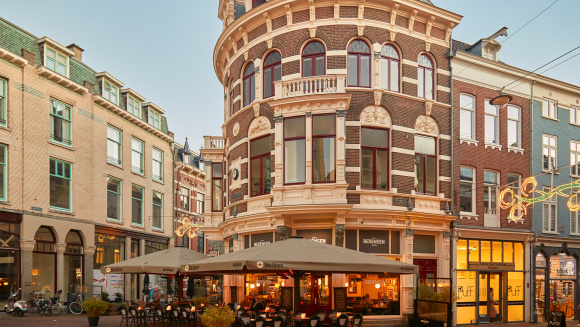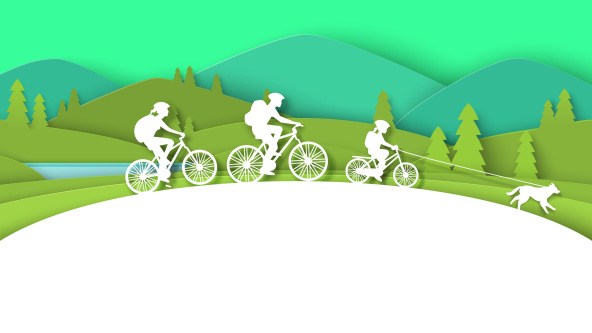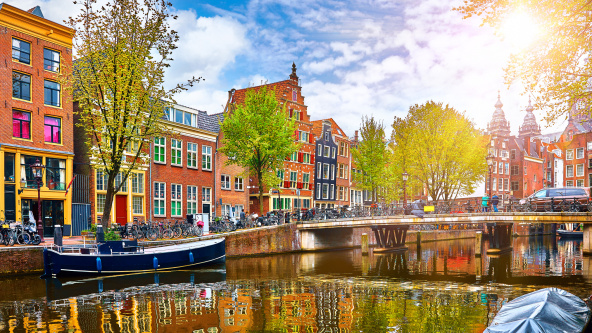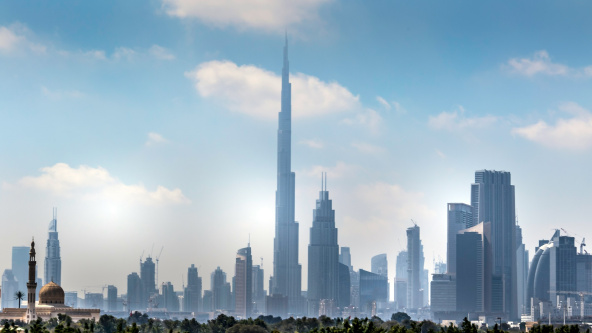Living in Arnhem, The Netherlands: an expat guide

What to expect when moving to Arnhem
You may not find yourself running in quite the same cosmopolitan circles as you might in the expat-padded world of The Hague or Amsterdam, but with some of the best art and fashion courses in Europe at ArtEZ (Arnhem's university of the arts) Arnhem has its own cool, creative vibe that many love.
Some local history
In the early 19th century, Arnhem (and neighbouring Nijmegen) attracted well-to-do Dutchmen returning from the colonies with money to burn. These ‘sugar barons’ turned Arnhem into a green city of wide boulevards and stately homes. Many of the grand outlying estates were eventually converted into parks, making the countryside here some of the most beautiful in the Netherlands.
Arnhem’s proximity to Germany has had its historical downside. The Battle of Arnhem in September 1944 left the town shattered. British troops were forced to retreat and the locals were forced to evacuate the city and environs. When they returned in April 1945 after the liberation of Holland, the inhabitants found the town plundered and in ruins. The people of Arnhem still honour the British sacrifice. There are — unsurprisingly — many war museums in the area, and an annual commemoration ceremony in the nearby village of Oosterbeek, last redoubt of the British command. Similarly, the American and Canadian war efforts are annually commemorated across the Waal River just beyond Nijmegen.
What is the weather like?
You don’t come to the Netherlands for the weather. If you wait too long for a nice day, you may never leave the house. Pull on your wellies and mac and pack a very sturdy umbrella; the cheap ones will just get turned inside out by the wind. Winters are long, dark, and wet, but not terribly cold; summers are short and wet, but not terribly warm. It is not unusual to have a range of climate phenomena all in one day. You will know the summer holidays have started by the vast numbers of caravans taking to the roads. However, there is nowhere more lovely on a sunny day, and in the spring the carefully tended gardens are stunning.
How friendly are the Dutch?
The Dutch are blessed with a sense of humour (a necessity when listening to foreigners butcher their language) and are happy to help, provided you ask the right questions. And herein lies the paradox. Although the Dutch are a generally agreeable folk (albeit extremely forthright) they are surprisingly tight-lipped when it comes to questions regarding the business of day-to-day living.
The only thing for it is to ask lots of questions no matter how daft, and eventually you will receive answers that will keep you on the right side of the law, properly fed, and able to access the internet or phone home.
Although the Dutch are a generally agreeable folk (albeit extremely forthright) they are surprisingly tight-lipped when it comes to questions regarding the business of day-to-day living.
Holidays and celebrations
The usual Western European holidays are celebrated in the Netherlands: New Year’s, Easter (Paas), and Christmas (Kerst), along with King’s Day (Koningsdag) on 27 April when the nation celebrates by wearing anything orange (the colour of the House of Orange) and holding a massive nationwide street party-cum-flea-market. Children traditionally sell their old clothes and toys in makeshift street stalls.
Christmas is a less commercial affair in Holland. It’s often a more sober and family-oriented day than elsewhere. St Nicholas Day (Sinterklaas) on 5 December is the bigger event. To the initiated, Sinterklaas can feel a bit bewildering. Every night during the two weeks leading up to the 5th, children set out their shoes (traditionally their clogs) for the nightly visitations of Piets, who are Santa’s little helpers. The Piets leave sweets and sometimes a little present in the shoes. In school and on TV, children chart Sinterklaas’ progress by steamboat from the south of Spain via France, Belgium, and Germany up until his arrival. Sinterklaas arrives on the 5th at school (the 5th is not a holiday) delivering yet more candid treats. And then, abruptly, it’s all over.
Where to live in Arnhem
The Netherlands is the most densely populated country in Europe and living space is at a premium.
There are some very nice newer properties in Arnhem South, but some areas are less agreeable. Many choose Arnhem North near the city centre, which provides good access to school by bus. Others live in the nearby villages of Oosterbeek, Velp, Huissen, Elten, Elst and Bemmel, and some further south in Nijmegen (although the traffic over the Nijmegen bridge can be horrific during peak times).
Renting a house
Finding rental property in and around Arnhem can be a mission. Most properties are unfurnished, but equipped with white goods, curtains, carpets, light fittings, etc. Many kitchens do not have ovens. Be prepared to downsize: most houses are cosy. One bathroom is usually the norm. Be sure to ask if the house is for sale as well as for rent. The property market moves at a glacial pace and many owners try to have their cake and eat it by renting while the house is on the market. This means you may have to show prospective buyers around or move out rather suddenly.
Getting started in Arnhem
Connection to gas, electricity, and water is fairly straightforward, and you can generally carry on with whatever provider the landlord already uses. You pay an estimated amount per month with a final reckoning at the end of the year and when you move out.
Learning Dutch
It must be said that one of the huge advantages to moving to Holland is the fact that the Dutch speak magnificent English (and usually a few other languages as well), which defers the immediate need to learn more than ‘please’ and ‘thank you’ in Dutch. However, there are plenty of opportunities to learn the basics privately or at local language institutes. As an accompanying spouse, it is also difficult to work here unless you have a high level of Dutch proficiency.
Learning at least the fundamentals of the language (and this is universally true) will make life a bit easier, but Dutch is generally thought of as a difficult language to learn. Fortunately, it is very rare to find folks who don’t speak any English.
Be prepared for Dutch bureaucracy
Dutch bureaucracy is a self-sustaining life form. Like a virus, it is constantly mutating to ward off predators, the most feared of which is logic. Even the Dutch find their bureaucracy maddening. Do not be lulled into a false sense of belonging because you have an EU passport. For starters, you will need a residence permit, a SOFI (tax) number and possibly a work permit, and you must register with your local municipality (gemeente). To achieve this, you will need a dizzying array of documentation including passports, birth certificates, contracts, marriage certificates, and possibly also a lock of your firstborn’s hair and a piece of your grandmother’s wedding china! You can opt to tackle this on your own, but it will take years of therapy to recover. Better to enlist the services of a relocation agency that can guide you gently through the sea of red tape.
Opening a bank account
All the major Dutch banks are represented in Arnhem, such as ABN AMRO and Rabobank. ATMs are everywhere and internet banking is commonly used. Credit cards less so, for everyday spending anyway, as many shops (including the supermarkets) will not take them.
Importing a car and driving
You can import a car into Holland, but there is a mind-boggling amount of paperwork involved in registering the car and changing the plates. The police will often stop cars with foreign plates. If you are in the market to buy, you might be lucky and be able to buy a car from one of the families leaving the international school at the end of the academic year.
If you have an EU driving license, you may drive for up to 10 years in Holland before exchanging it for a Dutch license, otherwise, your license is only valid for six months after registration as a resident. You can apply to exchange an EU license for a Dutch one at your local municipality office, but the waiting time is a bit vague (could take one week or six weeks, we were told). The real catch is that you are not allowed to drive without a license, so what to do while you are waiting? There are allegedly ways around this, so keep asking those questions!
Chances are that you will not live close enough to school and/or after-school activities to bike it as the Dutch do, and you will therefore probably spend a lot of time in the car. On the busy motorways around Arnhem, traffic can be heavy during rush hour (particularly in the winter months).
Getting insurance
If you buy a bike, it is wise to insure it, as stealing bikes is a bit of a national pastime and it cannot be included in your house contents insurance. If you take your bike anywhere, make sure you have a very good chain and lock or use the free bike garages in town (fietsenstalling).
There are plenty of insurance companies around and the agents almost always speak English or will find someone who does. You will need household insurance, auto insurance, third-party insurance, health insurance, window insurance, legal insurance: the list goes on and on.
Healthcare and health insurance
Healthcare provision in the Netherlands runs along UK National Health lines, although you will need proof of health insurance. Find a GP near you — ask a neighbour or consult the municipality guide — and arrange an introduction. Ditto for the dentist. The GP is your first port of call if you are sick, but if you are looking for tea and sympathy or even a prescription for antibiotics, book a flight out: this is a nation of stoics. However, if you need emergency care, the area is well-served and families report excellent care and facilities once you’ve convinced your GP that soon you will need a hearse rather than an ambulance.
Day to day living in Arnhem
Getting around
The Dutch love their bicycles and Arnhem is no exception in adapting its infrastructure to accommodate the cyclists (fiestsers). It’s a pleasure to cycle along specially designated paths with your little stoplights, bike shops on every corner, and an inalienable right-of-way.
However, this latter point can be a little nerve-wracking if you are still determined to remain behind the wheel of your car. You will find yourself using your mirrors in a way you haven’t since passing your test, swivelling your head around like something out of the movie The Exorcist to avoid the cyclist who sails blithely in front of you.
Parents can often be seen carrying two children front and back, a crate of beer, sacks of shopping, towing a buggy with two sleeping infants behind, and all of this one-handed because it is raining and they are holding an umbrella. This is why you have to be alert: no matter what daft move a cyclist makes, if you hit them, it’s your fault.
The alternative is to hop aboard the trolley buses. Many older children use the buses to get to school. Bus tickets (strippenkaarten) are available from newsagents, the tobacconist, or the post office for the odd trip, but it is far from straightforward so best to go with a veteran traveller at first.
Shopping
Arnhem prides itself on being the fifth largest shopping town in the Netherlands and has plenty of shops in the centre ranging from the big department stores to funky boutiques.
There are many supermarket chains represented in Arnhem including Albert Heijn, affectionately known amongst expats as Uncle Albert, and the rather optimistic sounding but not quite living up to its name Jumbo. Don’t expect variety and excitement. The Asian and Turkish supermarkets are well worth investigating, as they carry a more recognizably exotic range. Check out your local butcher, baker, and greengrocer. There is an open-air market by the Eusebiuskerk in Arnhem every Friday for fresh fruit and veg, fish, meat, and, of course, cheese.
Every village has a weekly market. Shopping is a daily exercise for many Dutch families given the limited storage space in most houses and packaging reflects this: very few jumbo packs are available. Apply for a loyalty card to take advantage of the special offers.
Eating out
There are plenty of restaurants and cafes, which range from traditional Dutch cafes to trendy bistros; from superb Asian restaurants to fast food emporia. Tipping is not necessary, but you can round up the total if you are feeling generous.
‘Eating out of the wall’ refers to the many self-service snack shops where you plonk your money into the slot and open up a small glass door to extract a kroket or a frikandel (both translate roughly as ‘mystery meat’, although frikandel is rumoured to be equine in origin) or the ubiquitous ham-and-cheese sandwich.
This is not a country of gourmands: chips with mayonnaise, raw herring with onions, and sausage with potato and cabbage are often found on the menu. A visit to a pancake (Pannenkoekenhuis) house is de rigeur: you won’t be gastronomically blown away, but the choice is impressive. Who knew you could do so much with the humble pancake? Great for kids as there is almost always a play area.
For the record, a ‘café’ in the Netherlands serves koffie (coffee), but a ‘coffee shop’ serves an entirely different stimulant!
Where to go and what to see
There are plenty of beautiful places to cycle and walk in and around Arnhem once you’ve donned your all-weather gear: Sonsbeek Park, Zypendaal Castle, and Rosendael Castle to name a few. The latter lies in the Nationaal Park Veluwezoom, which encompasses 11,362 acres of forest and heathland full of cycle paths and woodland trails, perfect for the mountain bike enthusiast. Even if you don’t have a bike of your own, you can make your way to the National Park de Hoge Veluwe where bikes are available free of charge for you to meander through the moorlands and dunes.
If you are an art buff, the park boasts a marvellous art museum. The collection was assembled by the industrialist Kröller-Müller in 1938, and the family’s St-Hubertus hunting lodge was designed by the architect Berlage. Arnhem is also the home of the Gelders Orkest (orchestra), the Introdans ballet company, the Museum of Modern Art, and the Musis Sacrum, one of the country’s oldest concert halls. Neighbouring Nijmegen is a university town, which likewise offers a host of cultural events.
There are many child-friendly things to do in Holland. Amusement parks, indoor play areas, and playgrounds abound. Arnhem has a fantastic zoo (you can buy an annual pass) and the wonderful Openluchtmuseum (Open Air Museum) and a hands-on water museum, both of which accept Museum Cards, a worthwhile investment for unlimited access to many museums around the country.
Playing sport
Sport is encouraged across the board. You can sign up at a gym, join a team (soccer and hockey are the sports of choice, but rugby is also offered), take up mountain biking, even learn to glide. Almost every child in Holland plays some sort of team sport, usually for a local team: it is a great way for kids to learn the language and make friends locally. Football is a national obsession. The local team, Vitesse, plays at the Gelredome, a massive stadium with a retractable roof which also doubles as a venue for concerts.
Because of its constant battles with the sea and the generally watery nature of the landscape, swimming is taught universally from a very early age. The standards are extremely high and the programmes are a rigorous mix of swimming and survival techniques. Parents of small children are advised to sign up (either locally or at the Grote Koppel near the school: private lessons are also available, but expensive) on arrival as waiting lists are long.
Teenagers in Arnhem
Parents of teenagers fretting over the Netherlands’ rather relaxed attitude towards soft drugs and prostitution (and a drinking age of 18) will breathe a sigh of relief. Children do have much more freedom here than in many other countries, but they can at least explore the boundaries in a reasonably safe environment. They do not — as a rule — throw all of their toys out of the cot and end up in rehab. Most parents agree that this freedom ultimately does wonders for a child’s self-esteem and confidence, adding further credence to Holland’s child-friendly reputation.
Meeting new people
Many international families find it difficult to fit in with the Dutch and their idiosyncratic ways. The neighbours will already know that you are foreign because you draw your curtains at night. On the pretext of having nothing to hide, curtains are rarely drawn. This takes some getting used to but is fantastic if you are incorrigibly nosy. You do not simply drop in on your neighbours but will be expected to introduce yourself when you move into the neighbourhood. Neighbours can be a goldmine of obscure information like the paper recycling schedule, the best dentist in the neighbourhood, and which bins go out on what day.
The last word
The traditional image of a freewheeling, tolerant Dutch society has come under some strain recently as the country struggles with immigration issues along with the rest of Europe. Open yet closed, thrifty yet generous, patriotic yet pragmatic: there is more to this little country than dikes, canals, ice skates, and houseboats. ‘Doe maar gewoon, dan doe je al gek genoeg,’ advise the Dutch pragmatically. Act normal – that’s crazy enough. Good advice indeed!
If you’re looking for a school abroad, our expert consultants can advise on all aspects of international education, from schools to local educational scenes.
Featured in: The Netherlands
Tags: Family



